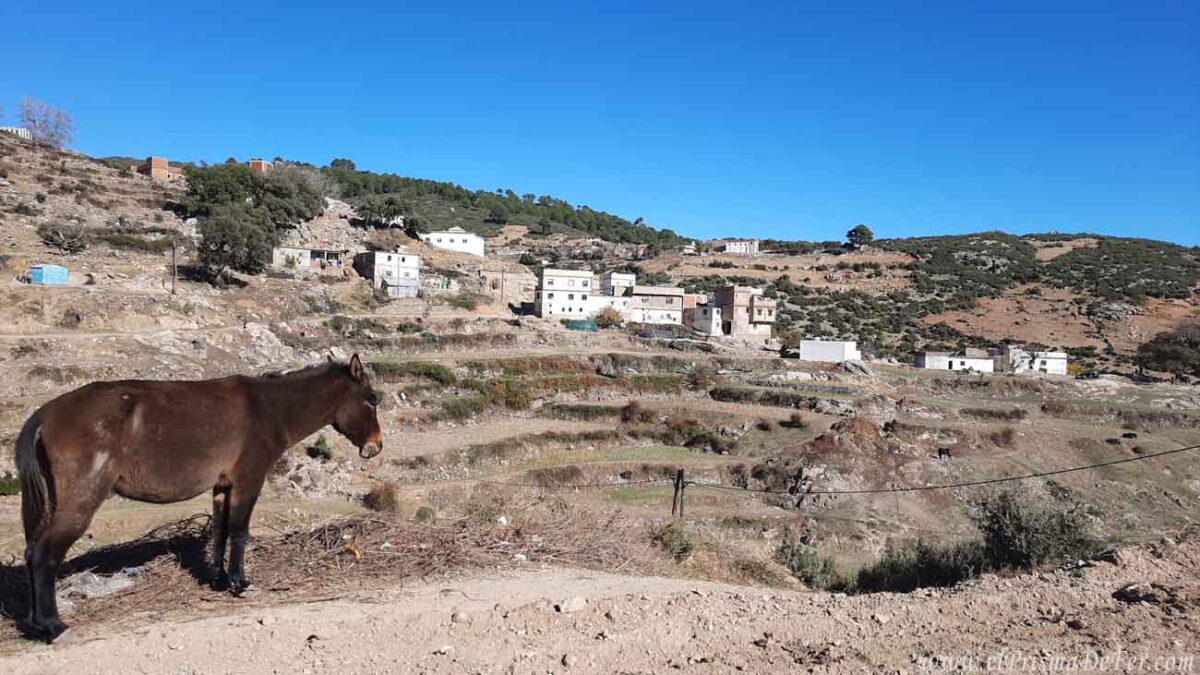Chefchaouen, the blue jewel of the Rif, is one of those places that seem to come straight out of a fantasy story. Located in northern Morocco, this small city captivates at every turn with its cobblestone alleys, carved doors, and walls painted in all shades of blue.
Beyond its well-known photogenic beauty, Chefchaouen has a relaxed atmosphere, perfect for wandering aimlessly, sipping mint tea with mountain views, or simply soaking in the tranquility that contrasts so sharply with the hustle and bustle of other Moroccan cities.
In addition to losing myself in its hypnotic medina, I ventured out on a 2-day independent trek in the Rif Mountains, until I reached the Akchour waterfall. The panoramic views along the way are beautiful, but they also reveal another side of the place: the vast hashish fields in the nearby villages, one of the main sources of production of this substance that is then exported to Europe.
It's no wonder that on every corner in the city someone insistently offers you "the best hashish in the world."
In this guide, I'll tell you the best things to do and see in Chefchaouen, and why this blue haven is one of the country's must-sees.
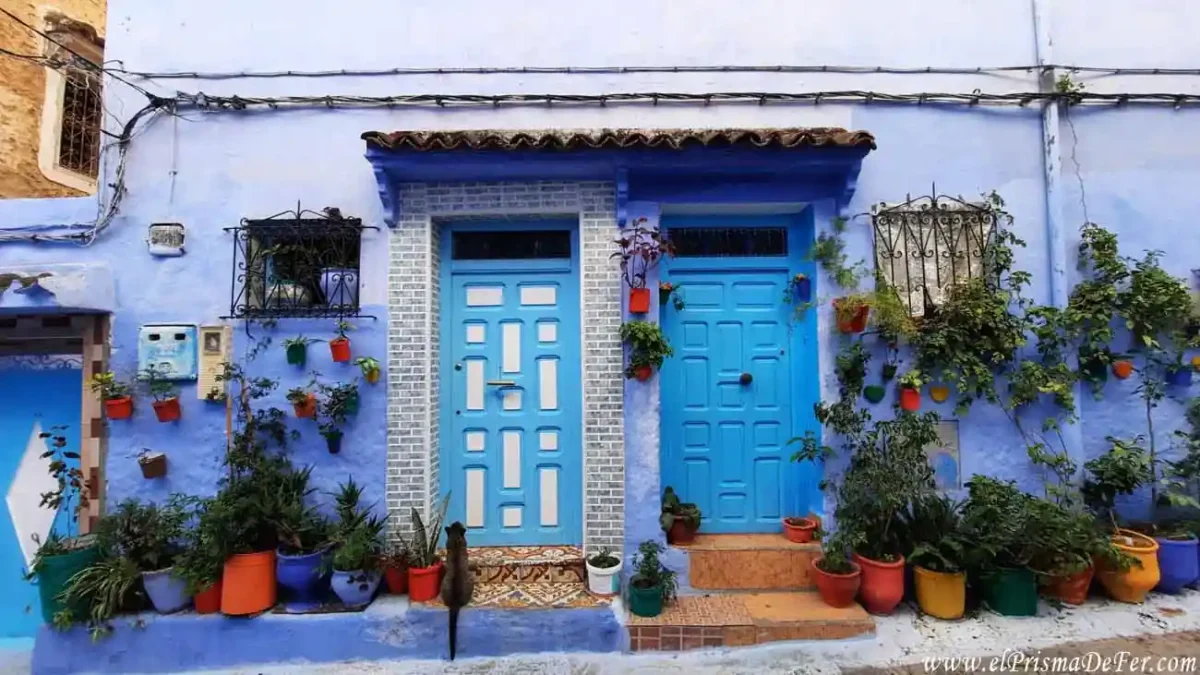

Table of Contents
Arriving at the blue city of Chefchaouen
I arrived in Chefchaouen from Rabat by bus, and the contrast was immediate. Not only did the landscape change, shifting from the Atlantic to the Rif Mountains, but so did the pace, atmosphere, and even the energy of the place. While Rabat is a modern, administrative city, Chefchaouen looks like something out of a postcard, with its unmistakable blue aesthetic that envelops everything: walls, doors, stairs, and even flower pots.
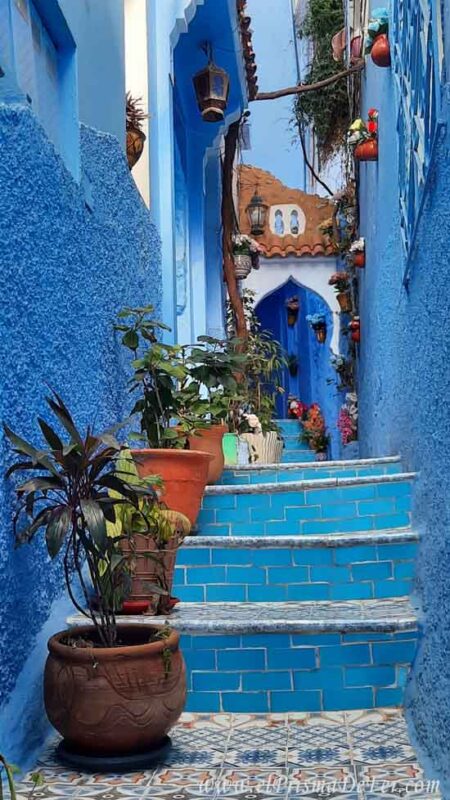
Every corner seems carefully painted to dazzle, and walking through its cobblestone alleys is like wandering through an open-air art gallery, where the light plays with the celestial hues and creates a magical atmosphere unlike anywhere else in Morocco.
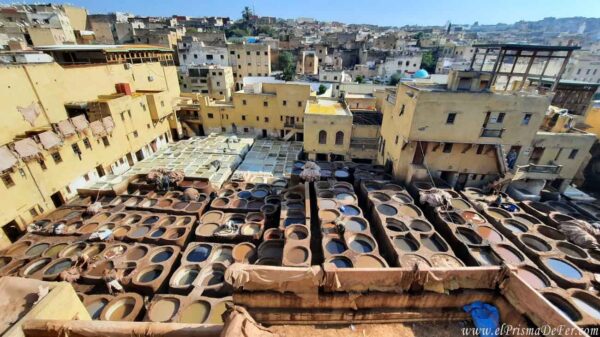
This post is part of the itinerary I put together for a 3- or 4-week tour of Morocco. If you'd like to see the full details, you can read the main article here.
If you're arriving in Chefchaouen by bus, like I was, you'll be dropped off at the main station, located about 1.2 km from the entrance to the Medina (see the map for the terminal's location). The walk to the center is uphill, so if you're carrying heavy luggage or arriving during the hottest hours, it can be a bit challenging. Note that taxis are available outside the terminal, though the ride is short, so it's a good idea to agree on a price before boarding.
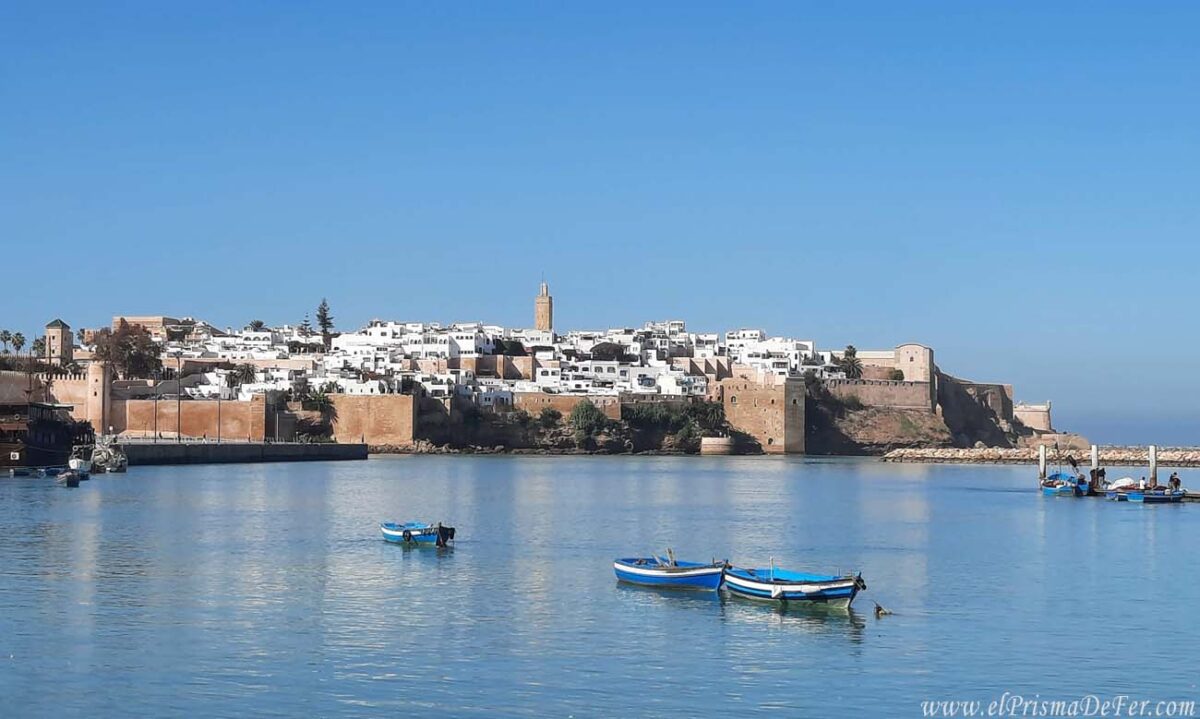
If you're interested, you can read the article where I tell you what to do in Rabat and Casablanca in 3 days
How to get to Chefchaouen
The most common and economical option to get to Chefchaouen is by bus.
CTM and Supratours are the most reliable and comfortable companies for tourists to travel in Morocco.
- From Tangier: The journey takes approximately 2–3 hours. There are very frequent services, with several departures daily.
- From Fez: The trip takes 4–5 hours. This is a slightly longer route, but a popular one for travelers. Some buses stop in intermediate towns.
- From Rabat: Duration: 7–8 hours. There are direct routes and transfers in another city, such as Tangier. There are usually stops in intermediate towns.
You can also get there by shared taxi (grand taxi)
- Available at intercity stations, especially in Tetouan or Tangier.
- Faster than the bus, but less comfortable.
- It requires haggling and sometimes waiting until seats are filled.
Rental car
- Excellent option if you want freedom and to explore at your own pace.
- The roads to Chefchaouen are in good condition, but are mountainous and winding.
- Ideal for combining with stops in Rif villages or arriving from less-connected destinations.
Can you fly to Chefchaouen?
No, Chefchaouen doesn't have an airport. The closest airport is Tangier Ibn Battouta. From there, you can take the other means of transport I mentioned above.
If you want to forget about all the logistics, you can also hire a private transfer through the Civitatis company.
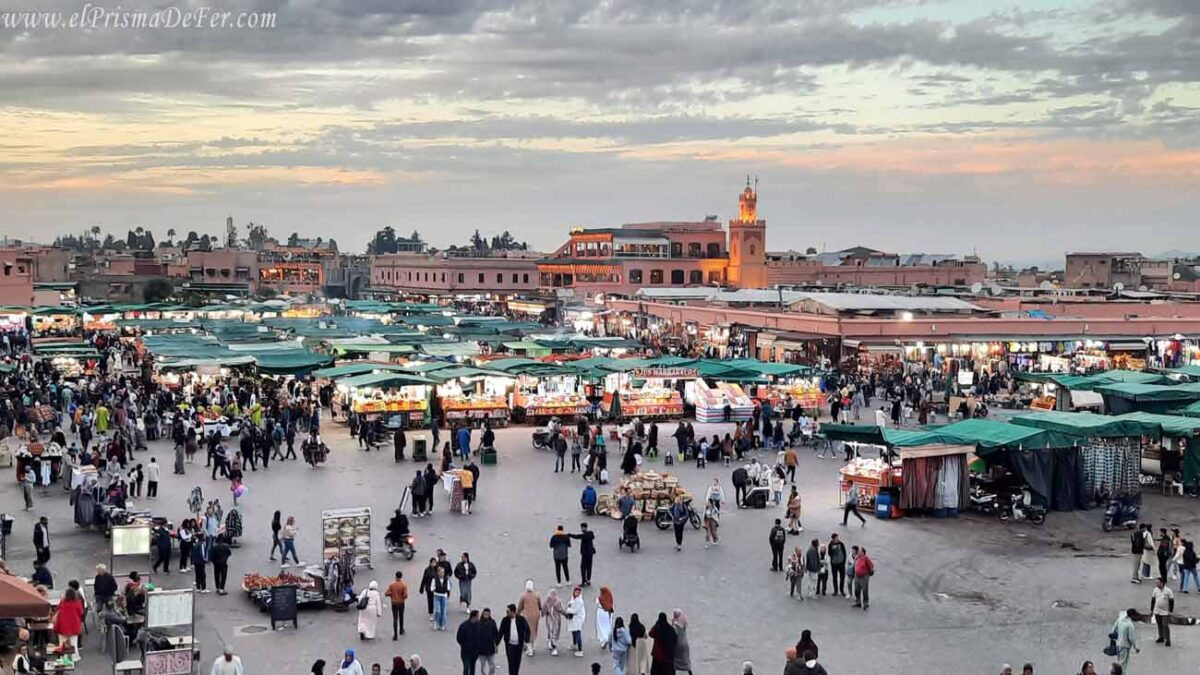
You can read the complete travel guide to Morocco. There you have all the information you need to plan your trip to this fantastic country.
Where to stay in Chefchaouen
When looking for accommodation in Chefchaouen, there are two distinct areas: inside the medina and outside it. Staying inside the medina means being in the heart of the blue charm, surrounded by narrow streets, traditional architecture, and just steps from the main attractions. It's ideal for those looking for the most authentic experience.
On the other hand, staying outside the medina offers quieter options, often with panoramic views of the entire city, and with better access by car or public transportation. Both areas have their charm, and the choice will depend on the style of trip you're looking for.
My personal recommendation is to stay within the medina. There are options for all tastes: from first-class riads to budget backpacker hostels. The medina is quite compact, so you can easily get around on foot. However, keep in mind that since it's built on the mountainside, you'll encounter constant ups and downs on its cobblestone streets.
I stayed at the Hotel Souika (see location on map) and I really can't complain. Great atmosphere, nice rooms, and a lovely terrace for socializing or relaxing.

Why is Chefchaouen blue?
If the city of Chefchaouen is famous for anything, it is for its unmistakable blue tone that covers its streets, houses and stairs, but why that blue color? Well, there are several theories about it:
- Jewish origin: Many believe that this tradition began in the 15th century, when Jews fleeing the Inquisition took refuge in the city and began painting their houses blue, a color that in their culture represents the sky, spirituality, and the divine presence.
- Practical purpose: Others claim that the color blue helps keep mosquitoes away.
- Refreshing and photogenic: Some simply say that blue softens the heat of the sun and gives a fresh air to the city.
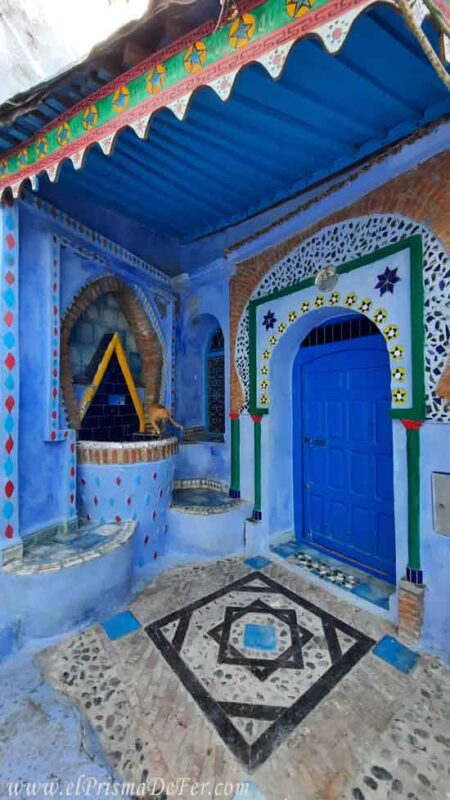
Chefchaouen and Hashish: What You Should Know Before Visiting the Rif
One of the realities that forms part of the rural landscape around Chefchaouen, and throughout much of the Moroccan Rif, is the cultivation of hashish. This practice, rooted for generations, represents a source of livelihood for many families in the area. Although the consumption and sale of cannabis is not legal in Morocco, a law was passed in 2021 allowing its cultivation for medicinal and industrial purposes under a regulated framework, mainly in this northern region.
While hiking in the mountains surrounding the city or to places like the Akchour waterfalls, it's not uncommon to spot small plots planted with cannabis plants growing between terraces, or even encounter locals who casually discuss the topic or try to offer you something.
At harvest time, once the plants have been collected and dried, the artisanal process of hashish extraction begins. This is usually done in closed rooms where the dried plant is placed on a mesh screen and rhythmically tapped to release the resin. This fine powder is then compacted into the hashish slabs that circulate in both local and international markets.
For those who come from cultures where this is taboo or highly penalized, it can be shocking at first. It's common to see and hear many men offering hashish to tourists almost openly, right on the street and without any disguise. They often emphasize that it comes from their own harvest, as if that were a seal of quality. This is part of the Rif's economic and social landscape, and understanding it without judgment allows us to connect more authentically with the reality of those who live there.
Learning about these dynamics is part of the journey and reminds us that every culture has its own complexities.

Map of main attractions in Chefchaouen
What to do in Chefchaouen
Although it's a small city, Chefchaouen has a charm that invites you to take your time. Rather than rushing from attraction to attraction, the ideal thing here is to lose yourself in its blue streets, be amazed by every corner, and enjoy the slow pace that defines local life. Still, there are several places you shouldn't miss to make the most of your visit—and that camera you're sure to have with you. Here, I'll tell you about the top things to do in this gem of northern Morocco.
Walking Tour
A free walking tour in Chefchaouen is the best way to start getting to know the city. While it's not free, as it works based on tips, it helps you get your bearings quickly, you'll learn history and anecdotes from a local guide, and you'll also get to meet other travelers. You can book your free walking tour here.
Explore the Blue Medina
Activity number one. Wandering aimlessly through its blue streets is a plan in itself. Every corner is photogenic and has its own magic. Don't be afraid to wander: it's a safe and easy city to navigate.
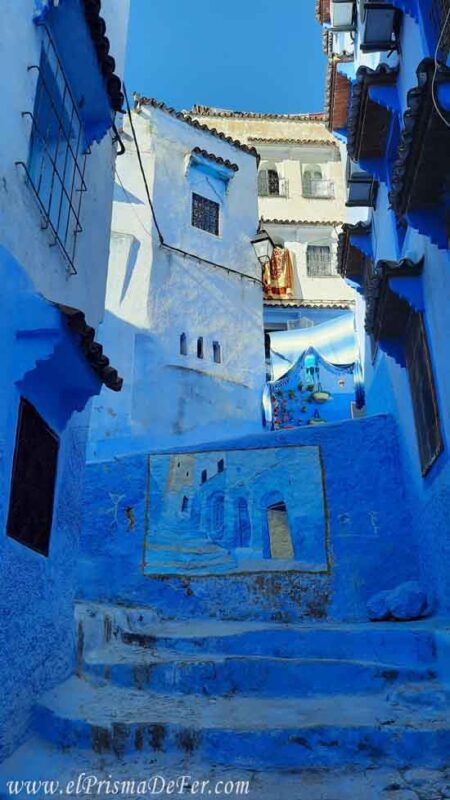
Uta el-Hammam Square
It's the heart of the city, surrounded by cafes, restaurants, and the old Kasbah. It's the perfect place to sit and watch local life unfold with a mint tea.
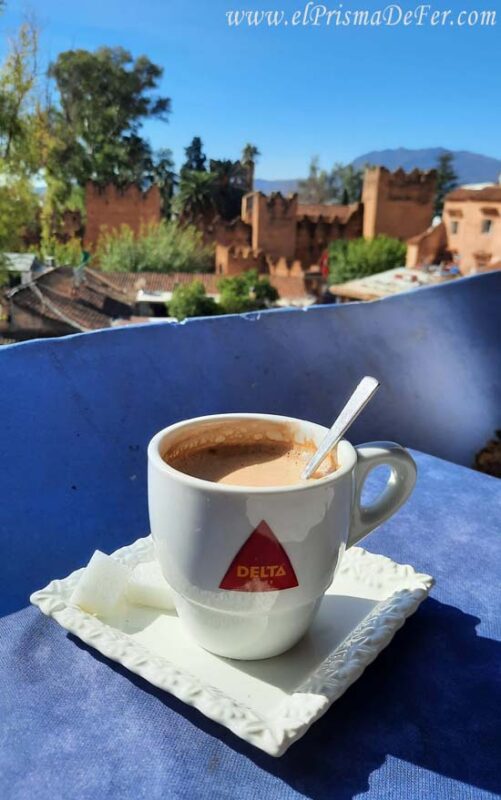
Spanish Mosque
Located on a hill overlooking the medina, you can walk there in about 30 minutes. It's an excellent place to watch the sunset with a panoramic view of the blue city.
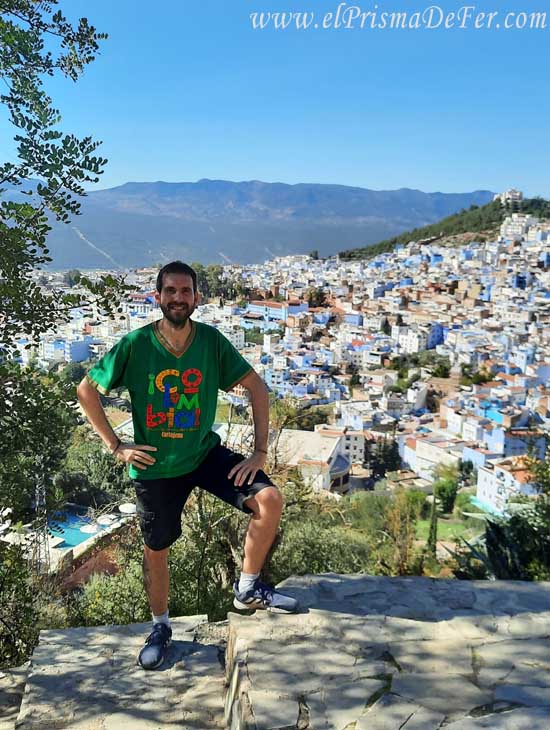
Visit the Akchour Waterfalls
The Akchour Waterfalls are one of the most recommended excursions from Chefchaouen. Located in the Talassemtane National Park, about 30 km from the city, they offer a unique natural experience in the Rif Mountains.
I arrived at the waterfall after a two-day trek from Chefchaouen, but what I found wasn't exactly impressive: just a trickle of water gently falling. It turned out it wasn't the rainy season, and that took away much of the attraction.
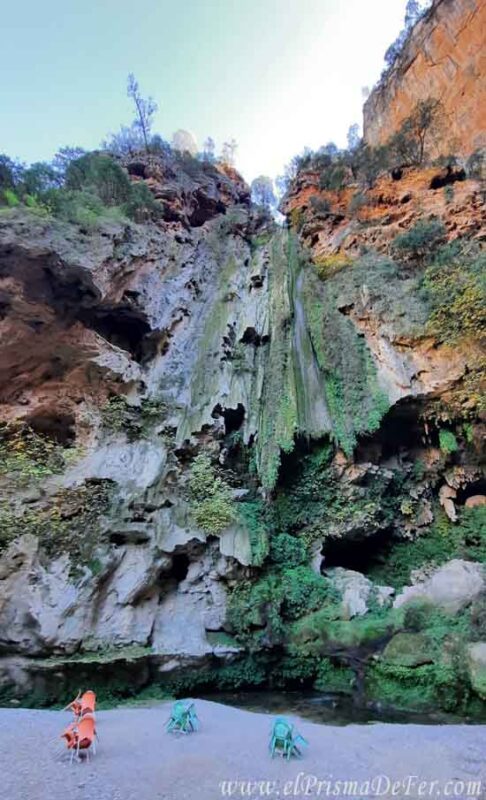
What to see in Akchour?
- The Grand Cascade: A waterfall surrounded by lush vegetation. The hike to get here is approximately 2 hours from the trailhead (note: not from Chefchaouen, that's a separate trek).
- God's Bridge: A natural arch-shaped rock formation that spans the river. This point is reached after a 45-minute walk from the trailhead.
Both trails are well marked and offer beautiful views of the natural surroundings.
How to get there from Chefchaouen?
- Shared Taxi (Grand Taxi): Shared taxis depart from Hassan II Avenue, near the police station, to Akchour. The journey takes about 45 minutes and costs around 25 dirhams per person.
Hiking over the Rif Mountains
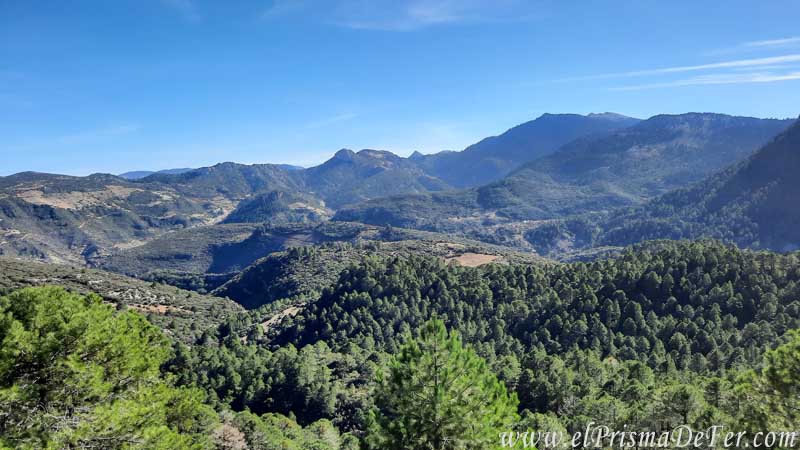
The mountainous surroundings are ideal for short hikes or even longer routes to Talassemtane National Park, with its verdant landscapes, rivers, and waterfalls. There, you'll find trails overlooking the valleys and Berber villages. In another post, I'll share my experience trekking through the Rif Valleys, solo and free, from Chefchaouen to Akchour Waterfall.
But if you want, you can also do it guided on a tour. The Civitatis company offers this private 2 or 4-day trekking route from Chefchaouen to Akchour.
Organized activities
The tours I recommend below contain affiliate links. This means that if you book through them, I receive a small commission at no extra cost to you. It's a way to support my work and help me keep this space alive, filled with stories and travel advice. Thanks for joining me along the way ;)!

📸 Best places to take photos in Chefchaouen
Chefchaouen, known as the "Blue Pearl" of Morocco, is a photography destination par excellence. Below, I'll list some of the best photo spots, and I'll also mark them on the map so you can save them and take them with you.
Sidi Bouchouka Street
One of the most iconic spots. It's a blue alley with stairs and flowerpots, full of hanging plants and painted doors. It's near the Casa Perleta hotel.
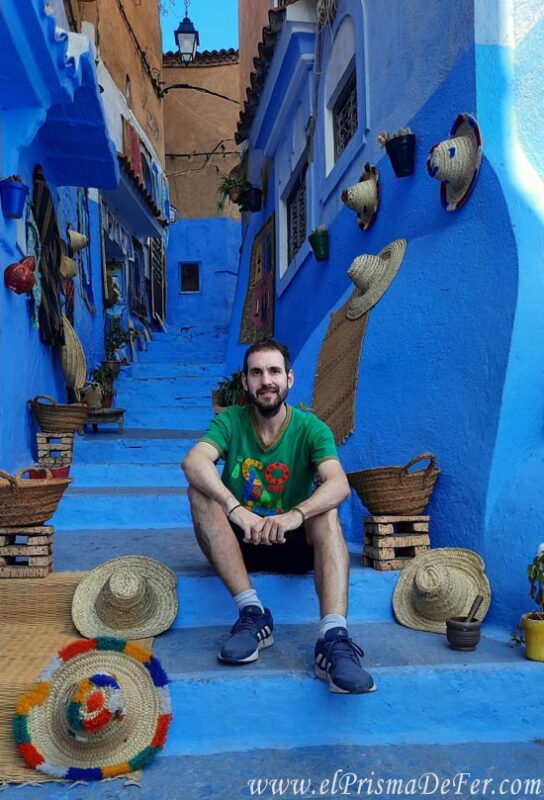
Painted and detailed doors
Wander aimlessly through the medina: each door has its own design, and many are framed by flowers or mosaics.
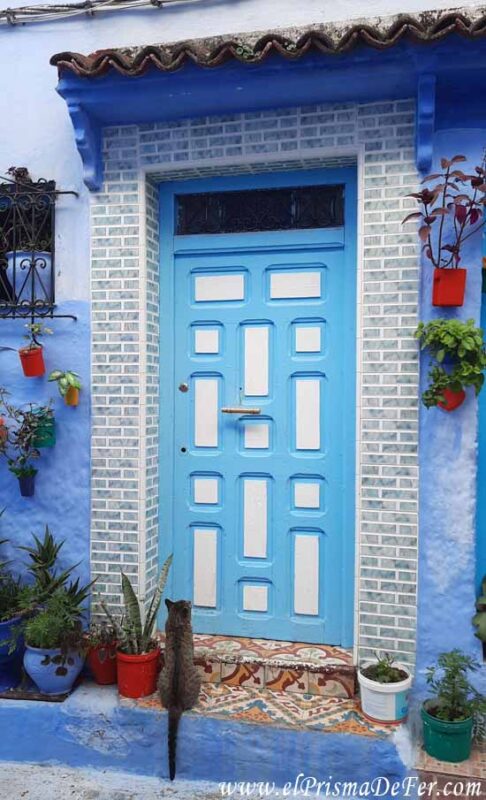
Alley with yellow stars (Bab Souk stairs)
A very Instagrammable spot due to the contrast between the intense blue of the walls and the decorative stars.
Uta el-Hammam Square
The heart of the city with the Grand Mosque and the Kasbah in the background. Ideal for capturing the local hustle and bustle with traditional architecture.
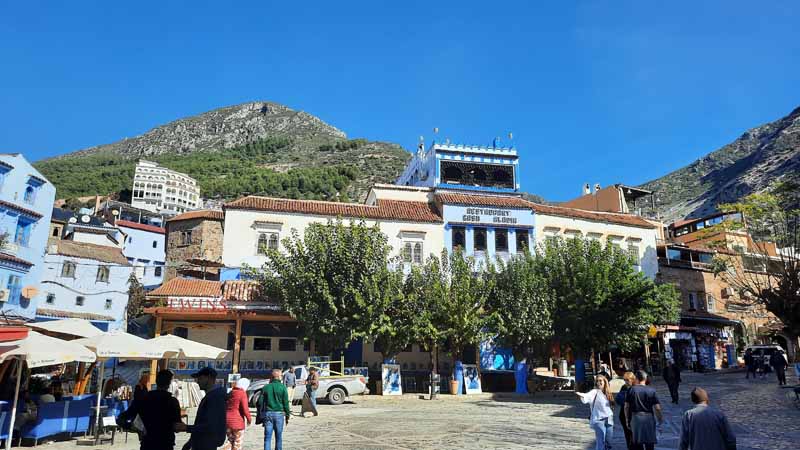
Place El Haouta
A charming square with a central fountain and typical architecture, perfect for capturing the local essence.
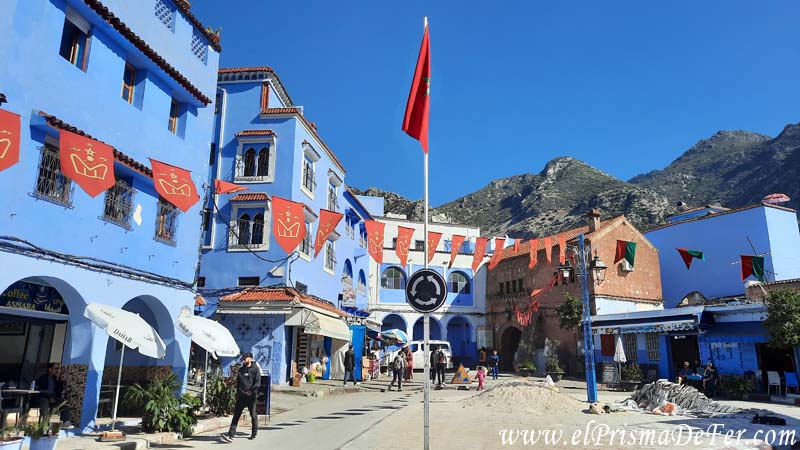
Mount Bouzaafar Viewpoint (at sunset)
A 20-minute walk takes you to the viewing point where you can photograph the entire blue city from above, bathed in the golden light of the sunset.
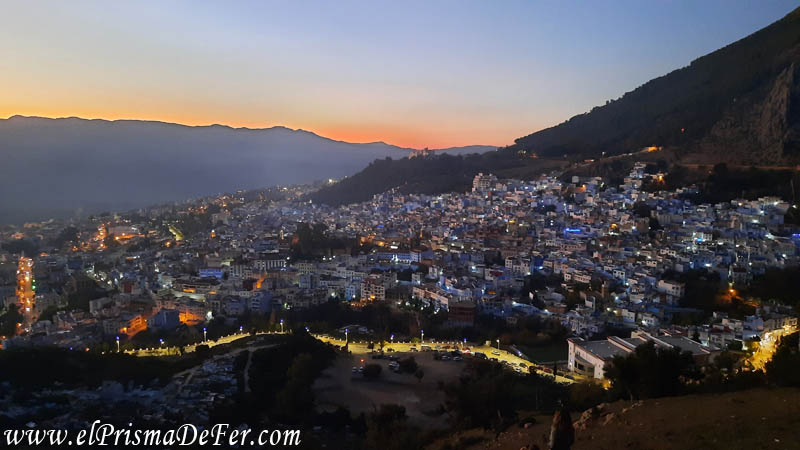
Kasbah of Chefchaouen
An ancient fortress in the center of the medina. From its towers, you have elevated views of the blue-tiled rooftops and the Rif Mountains. The interior courtyard is also very picturesque.
Curved passages and tunnels
Some alleys look like something out of a movie. Stone arches, soft shadows, and textures that blend perfectly with the blue.
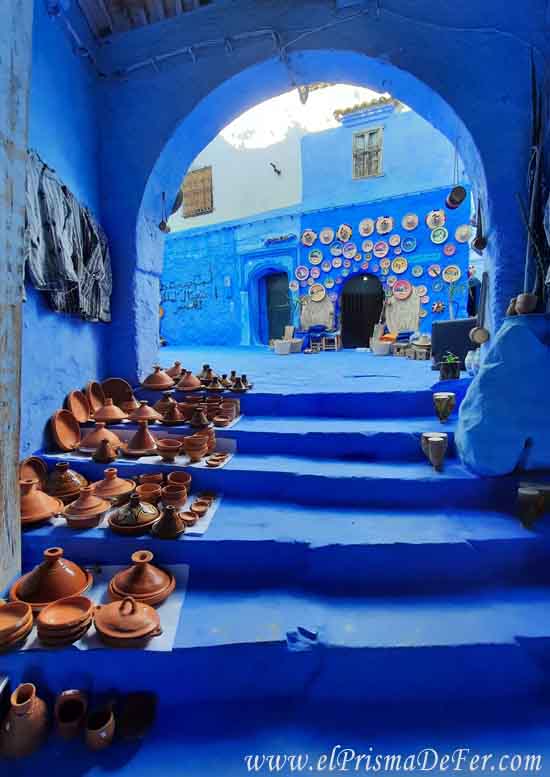
Street markets
Spice shops, rugs, soaps, and colorful ceramics add a more vibrant and human touch to the photos.
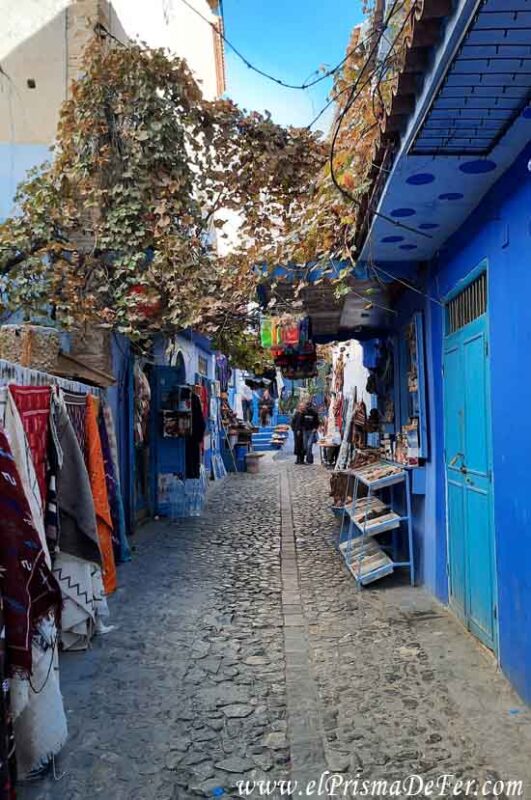
Traditional wash house of Ras el-Maa
A quiet corner with running water, women washing clothes, and a rural atmosphere that contrasts with the medina.
Hotels and riads with rooftops
Many accommodations, such as the Hotel Dar Sababa, have terraces with attractive panoramic views, especially at sunrise.
Final thoughts on my visit to Chefchaouen
Chefchaouen was the first city in Morocco I truly liked. After exploring Rabat, the capital, and the chaotic Casablanca, I found a much calmer and more pleasant atmosphere here. I met very friendly people, felt comfortable walking the streets (despite the insistent hashish sellers), and thoroughly enjoyed the mountain trekking experience. It was the first place on the trip where I was able to truly relax and connect with my surroundings.
Chefchaouen is definitely worth including in your Morocco itinerary, especially if you're visiting nearby cities like Fez, Tangier, or Tetouan. Getting there isn't complicated, and the rewards are enormous: a different destination, with a calmer pace, ideal for taking a break from the chaos of other cities and enjoying a unique setting among mountains and blue streets.
The next destination on my route through Morocco is Fez, a city steeped in history and tradition, with a medina that is said to be the most authentic in the country.
Video with some screenshots from Chefchaouen
Support The Prism of Fer!
Your support helps me continue creating free content on the blog. Thank you so much!



